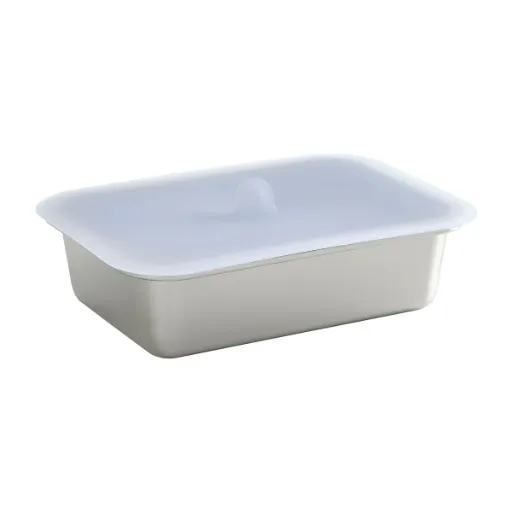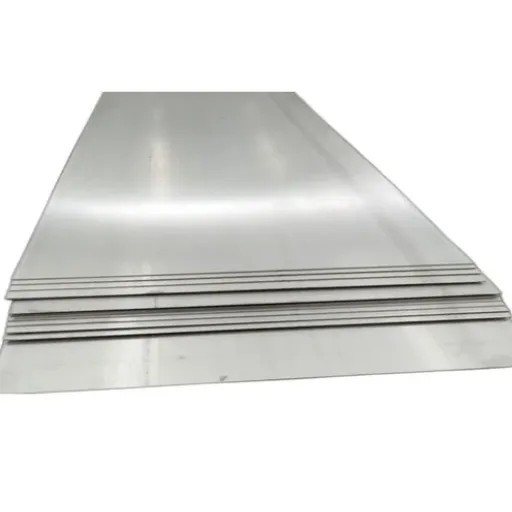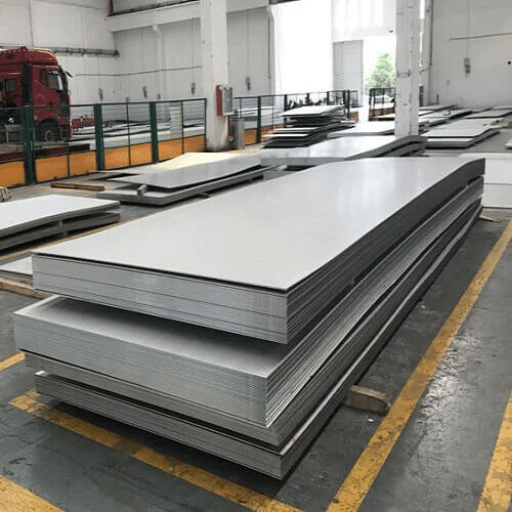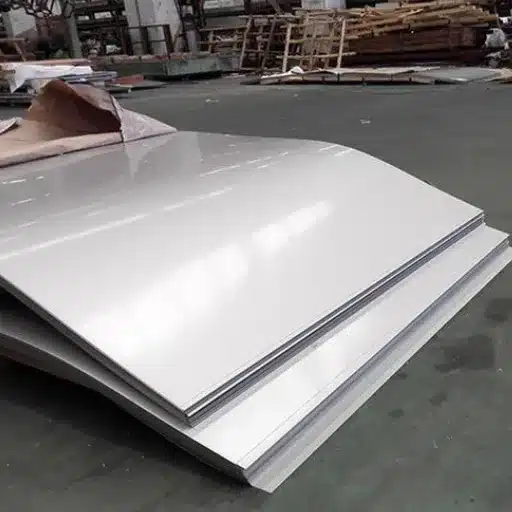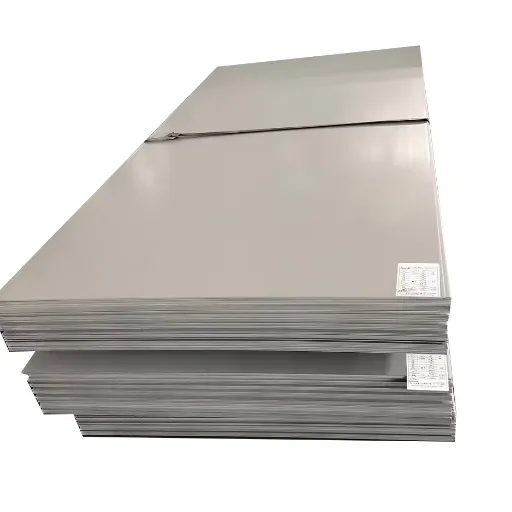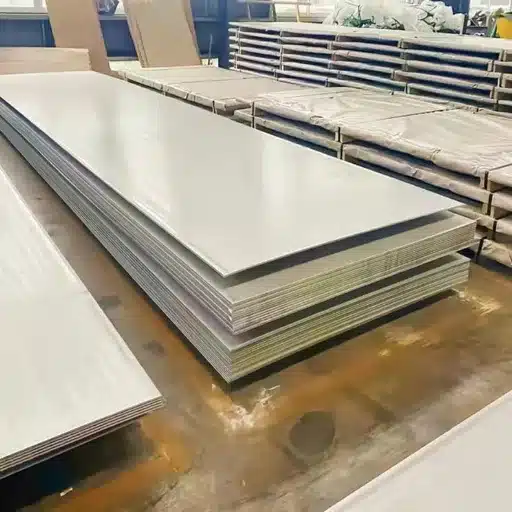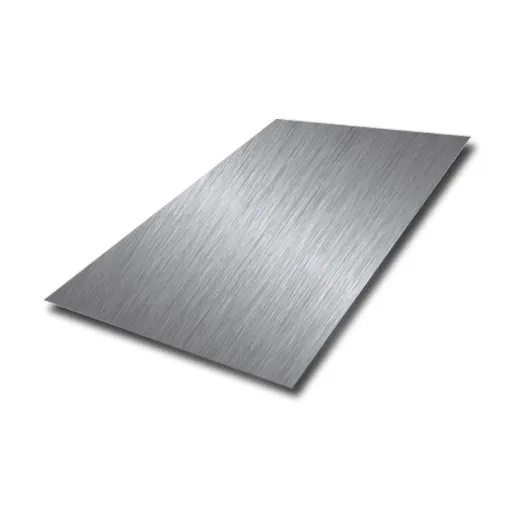For effective heating and cooking of food, microwave ovens have become must-have kitchen appliances that enhance the possibility of convenience. However, not all materials are suitable for microwaving, and the wrong material can cause damage, and in extreme cases, can pose safety hazards. One common question is: Is stainless steel microwave-safe? The article explains microwave containers and their interaction with microwaves, the importance of material compatibilities, and some essential dos and don’ts regarding microwave use. The guide thus provides insightful assistance toward determining whether it is hazardous to use metallic containers and which are safety alternatives to use in your kitchen.
Introduction to Microwave
Common Microwave Scenarios
The microwaves are modern kitchens necessity and proving their worth in everything from reheating and defrosting to cooking food very fast and efficiently. One of the most often mentioned ways of using microwaves is reheating already cooked food, but uneven heating is the result of microwaves scattering coming up from this case, which is often concentrated in some areas while leaving others cool. Especially that is very characteristic in thick or layered dishes where the thicker part may not be heated correctly and the dish would have cold spots where the bacteria could grow and that could be the cause of getting sick. The use of microwave-safe covers and stirring midway are some of the ways that can reduce the risks and create a situation for even heating to happen.
Another case that is very common is thawing frozen meat. Although microwaves do it faster than conventional methods, if done wrong, only the outer layer will be cooked while the inside would still be frozen. This unevenness in cooking is a result of the limited penetration of microwaves and the different kinds of thermal conductivity in foods. To reduce this problem, manufacturers have developed defrost modes that come with microwaves whereby lower energy levels are emitted that cause the food to be defrosted slowly reducing the chance of compromising either the quality or the safety of food. Separating pieces of food or turning them around during defrosting are additional tips that help in getting the defrosting consistent.
In addition to these, microwaves also play a big role in the kitchen for steaming of vegetables, melting of butter, and preparing of whole meals. The main factors that need to be considered here are the container selection as the unsafe plastics can leach harmful chemicals if heated very high and glass and ceramic are usually the safest choices. It is the users’ responsibility that these materials are in compliance with the high microwave safety standards set by the FDA or other relevant bodies. Moreover, vented lids and specialized microwave wraps can be used to cover the items to avoid splatters, keep the moisture level just right, and improve the cooking process. By grasping these situations and following the guidelines suited for each, users can take full advantage of their microwave while at the same time reducing the threats.
The Debate on Metal in Microwaves
The involvement of metal in microwaves has been a constant source of misunderstandings and worries for consumers. The major reason behind this confusion is the safety issues that could possibly arise from using metal in microwaves. Instead of getting absorbed, metal reflects the microwave radiation, which in turn may even lead to sparks and cause damage to the internal parts of the microwave. This is the reason why manufacturers and safety organizations always suggest against the use of most metal objects, including aluminum foil or utensils, in a working microwave. The problems originate from the interaction of microwaves with conductive substances, which can interfere with the essential electromagnetic field for inconsistent cooking.
However, some metal can still be used in microwaves, but with much caution. For instance, there are some modern microwave-safe containers and cooking accessories that have very thin layers of metal and are purposely given the property to safely interact with microwave energy. These materials usually go under very strict testing to pass the safety standards which means they will not cause arcing or sparks. Also, some metal elements such as turntable supports or trims inside the microwave are intentionally made to be safely inert during operation. This shows the need for discerning among purpose-built products and common metal items.
⚠️ Important: Consumers should always support their actions with the manufacturer’s guidelines for their particular model of microwave when it comes to introducing metal components. If there are any uncertainties, it is advisable not to use metal at all and to make use of like glass, ceramics, or specialized plastics for cooking and reheating. Proper use of the microwave not only improves its performance but also prolongs the appliance’s life while maintaining safety as the primary concern.
Understanding Stainless Steel Properties
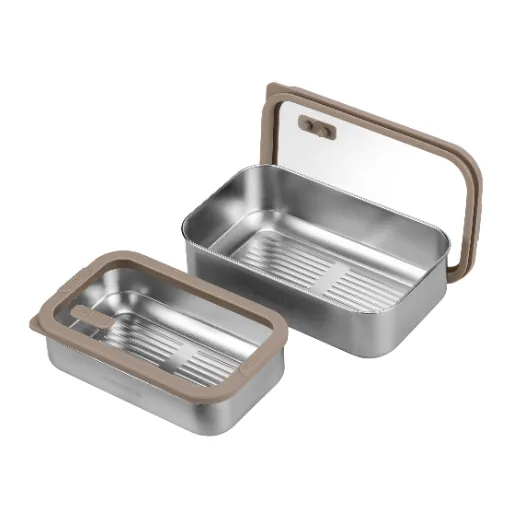
Composition of Stainless Steel
Stainless steel is a type of metal that is very adaptable and resistant to rust and is made mainly of iron and chromium with, in addition to the latter, small quantities of carbon and other elements such as nickel, molybdenum, or manganese added in varying proportions. The hallmark of stainless steel is its chromium content which, even though varies, usually stays between 10.5% and 30%. A layer of passive oxide is formed on the surface of the material due to the reaction between chromium and the oxygen present in the environment, thus giving the material excellent resistance to rust and corrosion. The layer has a self-healing property such that the material still has protective properties even if stainless steel gets scratched or damaged.
In stainless steel, the amount of carbon in the alloy affects the hardness and strength of the steel. The low-carbon grades, for instance, 304 stainless steel, have greater corrosion resistance and better weldability than the high-carbon grades, and thus, they are used for applications where durability and hygiene are very important. Higher-carbon grades, like 440 stainless steel, are used for making tools and machinery where wear resistance plus toughness is a must. Nickel is generally used to enhance ductility, toughness, and also the resistance to oxidation in high-temperature environments. Molybdenum plays an additional role in making the material harder to corrode especially in saltwater or halide-rich environments, hence it is mostly used in marine and chemical processing industries applications.
Stainless steel can be divided into different classes according to their microstructure, which includes austenitic, ferritic, martensitic, duplex, and precipitation-hardening variants. Alloyed stainless steels differ in the properties that they might have, and each class has been designed around a particular set of factors, which, among others, are tensile strength, corrosion resistance, and price. For example, the austenitic stainless steel, characterized by the presence of high amounts of chromium and nickel, is non-magnetic, and it has the best combination of forming and corrosion resistance traits. On the contrary, the ferritic stainless steel which is made up of mainly chromium and low carbon is magnetic and among the good things of its properties is that it can resist stress corrosion cracking. Thus, it is very important to know the exact composition and characteristics of the stainless steel grades so that their usage in industrial, architectural, and consumer areas can be optimized.
Key Properties of Stainless Steel
- ✓ Corrosion Resistance: Passive chromium-oxide layer provides self-healing protection
- ✓ Mechanical Strength: Tensile strengths ranging from 400 MPa to over 1000 MPa
- ✓ Temperature Resistance: Performs well in both cryogenic and high-temperature environments
- ✓ Hygienic Properties: Smooth, non-porous surface resistant to microorganisms
- ✓ Sustainability: 100% recyclable without quality degradation
Stainless steel is always in fashion due to its exceptional combo of mechanical and chemical properties, which allows the metal to exist in different industries. Corrosion resistance is one of the main properties of stainless steel, and it is mainly attributed to the passive chromium-oxide layer that forms on the surface of the steel. This layer heals itself when it gets in contact with air, so the stainless steel remains rustproof and stain-free, which is a great advantage in environments with water and chemical exposure, and also with fluctuating pH levels.
On top of that, stainless steel can put up its hand as an all-around tough material that lasts for a long time. With the grades having a very high range of tensile strengths—from approximately 400 MPa in the annealed grades to more than 1000 MPa in the cold-worked ones—the 400 MPa/1000 MPa difference is quite significant. A further reason why high-temperature resistance is one of the advantages for power generation, automotive exhaust systems, and aerospace engineering applications is that the material grants no such benefits in thermal expansion. Conductivity and thermal expansion rates that are lower than other metals, though, bring forth stability in environments where precise dimensional tolerances are required.
Being a hygienic material is another property that, quite crucially, makes it a preferred material in the food processing, pharmaceuticals, and medical equipment sectors, as such material need to be clean and sterile. Even though it is the case with stainless steel, the surface in question is smooth, non-porous, and resistant to microorganisms, making the sterilization process quick and easy while reducing the contamination hazard at the same time.
To cap it all, the material also boasts incredible formability, weldability, and recyclability. The austenitic stainless steels, just to name one group, are particularly ductile and can be formed into intricate shapes without risking the integrity of the structure. The use of various welding techniques, for example, TIG and MIG welding, makes the joining of parts in different applications very reliable. Moreover, stainless steel has no restriction on recycling, as it can just be recycled the very same way, thus eliminating the need for resource extraction and minimizing the impact on the environment.
Careful deliberation of these traits, together with the operating conditions and performance requirements, guarantees the right picking of stainless steel grades for specific applications.
Durability and Resistance
Stainless steel has become a favorite choice in many industrial and commercial applications because of its extraordinary durability and resistance to environmental factors. The main reason for its corrosion resistance is the extremely thin, passive, and stable chromium oxide layer that covers the stainless steel. The layer allows the metal underneath to have less exposure to oxidation and, therefore, chemicals. This property among others makes it extremely rust-proof even in tough conditions like the sea or places with a lot of moisture.
Another important reason why stainless steel is so durable is its mechanical strength. The different grades of stainless steel have different abilities, but generally, they can endure both cryogenic and high temperatures, which means they won’t fail where other materials would. For instance, austenitic grades like 304 and 316 stainless steels continue to be strong and resistant at temperatures higher than 1500°F (815°C). That is why they are used in areas where there is high heat like exhaust systems and heat exchangers.
Stainless steel also has great resistance to impact, wear, and abrasion, which are all very important characteristics for heavy industry and construction applications. The properties all together with proper maintenance and the right grade choice according to the application requirements result in a material providing a long service life and superior lifecycle cost compared to its alternatives.
Microwave Safety Explained
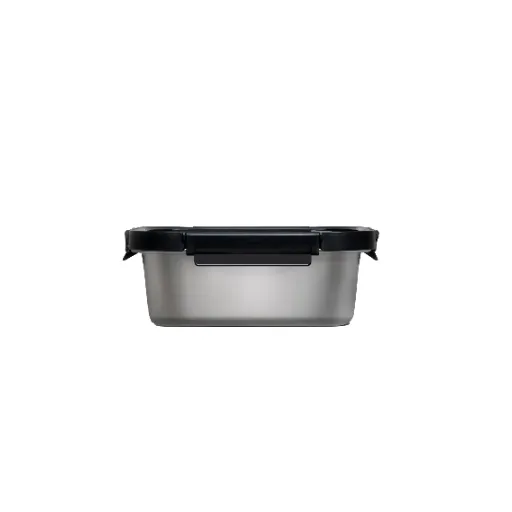
Traditional Advice Against Metal
The metal object placement ban in microwaves is a consequence of the peculiar microwaves’ interaction with materials. Microwaves use radiation that does not ionize to heat up water molecules which in turn cook food. Metal, being a good conductor, reflects microwave energy instead of letting it penetrate. The result is the formation of complex electromagnetic fields in the microwave cavity and consequently non-uniform distribution of waves. The focused energy may result in arcing which is defined as visible electric sparks occurring whenever electrons move from one metal edge to another or from metal to wall of the microwave. The movement of electrons may damage the interior of the microwave or even start a fire thereby posing a risk.
Another issue is the shape of the metal objects. The sharp edges or points, like those of aluminum foil and metal cutlery and the decorative edges, increase the chances of arcing due to a breakdown of gas known as corona discharge. This is because microwaves are present in larger quantity at these sharp points, resulting in the generation of high-voltage gradients that can emit ions and eventually sparks. Moreover, thin pieces of metal, such as aluminum foil can get very hot very fast as they reflect microwave energy. If this rapid heating is unchecked and the foil comes into contact with food or the walls of the microwave, it may lead to a fire.
Nonetheless, some metal and microwaves interactions are not purely dangerous and researchers have in fact discovered that some metal objects are safe to use under certain conditions. To illustrate, a metal mesh screen in the door is a common feature of modern microwave ovens. While the screen prevents escaping of microwaves, it still allows the passage of light so that the food can be seen. Also, recently microwave-safe products with small amounts of metal (like metallic trims on containers) have come up in the market which is because safety testing has been done on them to ensure that they are indeed safe. Awareness of the technical principles involved paves the way for strict adherence to the manufacturer’s instructions and making sure that any items in the microwave are up to the current safety standards.
Concept of Arcing in Microwaves
What is Arcing?
The phenomenon of arcing, sporadic discharge of electric energy, is liable to happen in a microwave when the latter creates conditions for the formation of high-voltage points. This is the case when the metallic objects or the microwave’s electromagnetic field conductively interact. The metallic trims, wrinkled aluminum foil, or even minerals-rich foods such as potatoes or sodium, which can pasteurize hotspots are the main causes of arcing.
Microwave emission and reflection in the heating cavity when arcing takes place are the basics of physics involved. The use of a conductor not only changes the uniform field but also leads to the concentration of energy in the ‘hot’ region. Consequently, if the energy breaks the dielectric strength of air, ionization occurs and a spark is produced. The loudness of the spark and crackling noise accompanying it as well as the possible ozone generation are some of the signs of arcing. If arcing is persistent, it will first destroy the protective coating and subsequently lead to inefficiency or safety hazards of the microwave.
Microwaves must never be placed with untested metal or irregularly shaped materials. In addition, even small pieces of foil or a few metallic patterns on dishes are enough to cause arcing. User safety and the appliance’s longevity are guaranteed only by good knowledge of the mechanics outlined above coupled with adherence to manufacturer’s instructions.
Reflection of Microwaves and Heating Issues
The usage of microwave ovens is based on the laws of electromagnetic radiation, mainly in the frequency range of 2.45 GHz. This frequency is such that microwaves can pass through all types of non-metallic materials and cause vibrations of the water molecules, fats, and sugar thereby producing heat through the absorption of radiation by them. On the downside, the metallic surfaces that reflect the microwaves introduce a problem of uneven heating and leakage of device protection. The metals, being good conductors of electricity, do not absorb microwaves but rather reflect them, thus creating a situation where the electrical energy gets concentrated at sharp points or edges. The large electric fields at these points can ignite the gas, causing arcing, which is a flash of electricity and can damage the internal components of the microwave.
Uneven heating occurs very frequently when specific food compositions or container materials interfere with the absorption of microwaves. For example, some plastics that are microwave-safe can behave as good energy sources, while those not rated for such use may either melt or fail to produce good heating. Further, the different densities or moisture contents in the foods result in their different absorption rates, which creates “cold spots” in the dish. The inconsistencies may not only be a nuisance but also a danger when perishable or raw ingredients are involved, as the negative effect of inadequate heating is a failure to kill the harmful bacteria or pathogens. Microwaves users are however at an advantage in that they can do it the hard way by stirring or rotating the food periodically or selecting appropriate containers, as recommended by manufacturers.
It is possible to understand and solve these problems such that they do not hinder the microwave heating process and the risk is reduced to the minimum. The cutting-edge technologies of today have done away with this problem by the integration of such features like turntables, inverter systems, and humidity sensors that help in obtaining uniform heating. The turntables rotate the container during the heating cycle and therefore promote even energy distribution, while inverter systems give precise control over power levels and prevent the overheating of certain areas. Humidity sensors can detect when the food is cooking and has reached the desired cooking stage, thus reducing inconsistencies. This collaboration between technological advancement and user knowledge of microwave-safe practices can enhance performance, safety, and efficiency to a great extent.
Potential Risks and Hazards
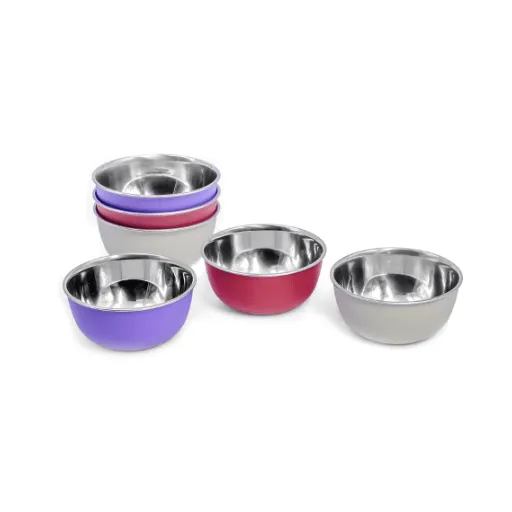
Damage to Microwave Interiors
The utilization of non-microwave-safe materials like some types of plastics and metals is one of the main causes of microwave interiors getting damaged, which might also affect the performance of the appliance. Of all the materials, metals are the most problematic as they conduct electricity and thus when microwaved they create sparks. Besides, the arcing makes the interior lining to get burnt or damaged severely over a long period of time. Furthermore, non-heat-resistant plastics can be melted or deformed when subjected to microwave radiation for too long and, as a result, a hard-to-clean residue that may cause the appliance’s malfunction builds up. Conducting regular inspections and following the manufacturers’ recommendations regarding safe materials can help in considerably lowering these risks.
Microwave interior damage is also accelerated by the overheating or explosion of improperly contained liquids or foods, which are other factors contributing to this issue. For instance, a sealed container with no venting can force the steam to escape, which will create a pressure build-up that can either rupture the container or cause it to leak. Thus, apart from the microwave being flooded with liquid, the sealing off of the interior by the later on cleaning-up process will cause the interior coating to weaken over time. Heated foods containing a high percentage of fats or sugar are also a risk factor, as they can achieve extremely high temperatures, resulting in the staining or blistering of the enamel or other interior surfaces. It is equally important to make sure that the containers are well-ventilated and heating time and power input are in compliance with the manufacturer’s instructions in order to maintain microwave integrity.
Microwave interiors can also be permanently damaged due to cumulative wear and tear from neglect or improper use. A good example is when food residue, grease, or spills are not cleaned, then these substances get baked onto the interior surfaces during the next use. Gradually, such a thick layer can cause the appliance to become less effective than it was since the layer might absorb microwave energy or cause heterogenous heat distribution. Moreover, abrasive cleaning methods or the lack of care can lead to scratches or chips occurring which can be a point of compromise for the interior’s protective layers thereby making it more susceptible to corrosion or further damage. The adoption of gentle cleaning methods with non-abrasive tools along with timely maintenance such as part replacement can significantly enhance the functional lifespan of microwave interiors.
Fire Risks from Arcing
⚠️ Fire Hazard Warning
Arcing, which can happen within a microwave, is usually a major fire hazard and it mainly comes from reflective surfaces, improper maintenance, or unsuitable materials. Arcing is the process of high voltage causing a tiny spark to occur between two conductive points; if metal is placed inside the microwave or if the microwave’s interior is damaged, this may happen. The tiny sparks, which are really hot, may ignite the nearby materials, thus the fire hazard is created. For example, gold-plated decals on dishes or aluminum foil left in the microwave are commonly cited as reasons for the occurrence of arcing.
Electrifying one of the major causes of arcing is the waveguide cover which is the part that is worn out. The waveguide cover is doing the shielding of essential microwave parts from oils, food particles, and water. The waveguide can be cracked or bashed with a whole lot of food which can cause disruption of the electromagnetic energy flow resulting in localized overheating hence sparks and flames. The same scenario plays out when the microwave’s cavity wall has been worn out or coated since it exposes the underlying metal thereby arcing gets facilitated. It is very necessary to conduct regular check-ups of the waveguide cover and the interior cavity in order to reduce the fire risk.
To add on, the improper material usage inside the microwave has massive impact of increasing the very risk of arcing plus fire. Non-microwave-safe materials like thin plastics or metals create a barrier on the microwave’s energy distribution and cause problems like uneven heating or direct sparking. The studies show one thing that repeated exposure to such misuse can not only degrade the appliance’s internal components but also affect other areas of the appliance granting more potential hazards. So it is very important to always adhere to the manufacturers’ recommendations about suitable containers and clean-up procedures and also quickly repair or replace any broken parts to keep the operation safe and reduce the fire hazard.
Thin or Sharp-Edged Stainless Steel Dangers
Stainless steel parts that are thin or sharp-edged can be a source of a safety problem that needs to be monitored even though they are the most common in a variety of appliances as well as industrial tools. Metals of this type are particularly vulnerable to being deformed when they are stressed heavily or when an irregular force is applied, which would then create the situation of material fatigue leading to the eventual collapse of the structure. In addition, uncut sharp edges left after the production process can carry physical danger with them and that would be cutting or even skin irritation in both cases, whether domestic or industrial contexts.
From the technical side of things, mishandling of these stainless steel parts can increase the risks. To give an example, thin sheets or edges might be more vulnerable to corrosion in high-salinity or highly acid-exposed areas because of their reduced durability at the contact points. Moreover, studies indicate that improper welding or cutting can lead to the formation of micro-fractures along the thin edges with fragility or breakage under stress of operation being the resultant risk.
It is recommended that, in order to prevent such hazards, during the manufacturing process, edge round-off techniques should be applied, and corrosion-resistant coatings should be applied as well as regular inspections for wear or deformation. In addition, it is very important that the manufacturers’ usage guidelines are strictly followed to keep the stainless-steel material from deterioration and to ensure both the safety of the workers and users.
Tips for Safely Using Stainless Steel in Microwaves
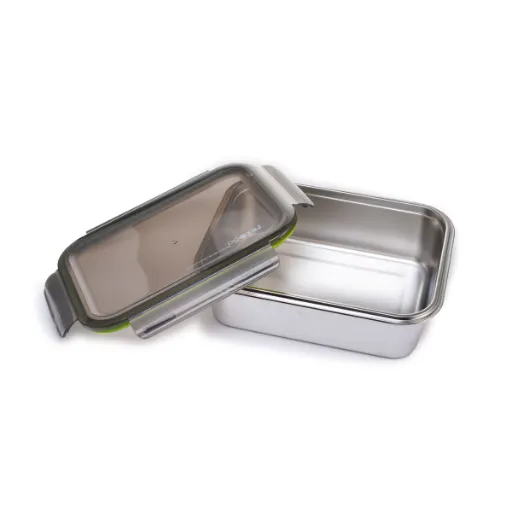
Identifying Microwave-Safe Stainless Steel Containers
When it comes to microwave-safe stainless steel containers, several key points need to be taken into consideration. First and foremost, investigate the container’s material composition. The highest quality stainless steel, which is usually referred to as 304 or 18/8, though resistant to rusting and heat goes one step further and may still not be considered microwave safe. This is especially true for the way that metal reflects electromagnetic waves. In the operative rather than in the heating sense, stainless steel is different from glass or ceramic. It can block the microwave energy and therefore uneven heating or sparks can occur if the metal’s geometry is inappropriate for microwave use.
More so, check for the manufacturer’s label. Microwave-safe materials are expressly marked as such after being tested thoroughly to verify their compatibility with microwave radiation. Containers have such design modifications as rounded edges or thin walls to minimize the chance of overheating or electrical arcing. Another important factor is the addition of plastic lids or rubber seals, which should be safe for microwave use too, to the main material being in question.
Lastly, signs of wear and tear, such as warping, scratching, and denting make it all the more difficult to predict how a stainless steel container will interact with microwaves, and thus they should be avoided. The safest way to ensure both the safety and functionality of stainless steel in microwave applications is through controlled testing or following the standards set by the recognized organisms like ASTM or ISO.
Guidelines for Safe Usage
✓ Safety Guidelines Checklist
- Verify Material Composition: Confirm stainless steel grade compatibility with microwave use
- Inspect Surface Condition: Check for scratches, dents, or corrosion before use
- Avoid Sharp Edges: Use containers with rounded, smooth surfaces
- Test Under Safe Conditions: Conduct initial tests following safety protocols
- Use Lower Power Settings: Reduce microwave power when using stainless steel
- Follow Manufacturer Guidelines: Always adhere to both microwave and container instructions
For safety concerns regarding the use of stainless steel in microwaves, it is very important to follow a certain set of best practices. First, the composition of the stainless steel should be verified so that its compatibility with microwaves can be confirmed. Some grades, austenitic stainless steels such as 304 or 316, resist arcing very well due to their not being magnetic. However, testing for electromagnetic interference under safe conditions should be done for these materials to eliminate any risks.
Before using the stainless steel container, check its surface condition always. The safety could be at the risk of energy concentration, which can eventually lead to sparking, since any deterioration like scratches, dents, or corrosion signs can create such points. It is a good idea to clean the container regularly to protect it from the build-up of the residue that might interact with the microwave energy and thus, undermining its integrity would cause nothing but belt tight safety margins.
Surface thickness and shape of the metal are also significant factors determining its use with microwaves. Sparking is less likely with wide plain surfaces while sharp corners and pointed features that draw in electric fields are more easily sparking. Besides that, it is preferable not to put stainless steel objects with narrow edges or detailed designs inside the microwave unless they have been explicitly tested or rated for that purpose.
Setting the microwave to a lower power level while using stainless steel utensils can reduce the risk, however, this must always be done within manufacturer’s guidelines and expert recommendations. The safest route is to check the current research and the standards set by organizations like IEEE or government regulators, who nurse the technicality and safety of these applications continuously.
Best Practices for Microwave Use
In the case of the microwave oven’s safe and efficient use, the understanding of the proper techniques and adherence to the established guidelines are very important. Personally, I always make sure that all materials that go inside the microwave are labeled microwave-safe, that I do not put in any metals or unapproved materials at all, and these are the ones that can spark or damage the oven. It is worth checking the food containers if they have any specific labeling on them and it is recommended that you use only those containers that are new or unharmed, as the others may emit harmful chemicals when heated.
Moreover, I try to have heat distributed properly during reheating or cooking activity by stirring or rotating items now and then. This method lessens the main problem of uneven heating which happens quite often with microwaving. To guarantee safety and efficiency parameters, I plan the operation of the appliance at manufacturer-specified wattages for the type of food or liquid being prepared, keeping it safer from the hazards of both overheating and undercooking.
Lastly, I make microwave routine maintenance a priority for the safety of its operation. I do regular cleaning of the interior to rid the place of food residue that may lead to smoke or the production of an unpleasing odor. In addition, I also check the microwave door and seal regularly to make sure they are in perfect condition, thus confirming that no energy is wasted during use. The combination of these technical practices and continuous compliance with official guidelines and the latest research gives me confidence in the safe and effective operation of my microwave.
References
- MIT Engineering – Ask an Engineer
This source explains why metal objects, including stainless steel, are generally not recommended for use in microwaves due to safety concerns. - Iowa State University Extension and Outreach – Safe Food Storage Containers
This article discusses the properties of materials like stainless steel and their suitability for food storage and other uses, including microwaving. - University of Kentucky – Food Additives and Safety
This document provides guidelines on safe practices for microwaving, including the use of stainless steel and other materials. - Click here to read more.
Frequently Asked Questions (FAQ)
Q: Can I use stainless steel microwavable?
Stainless steel is by no means considered to be microwave-friendly. Because the material is made of actual iron says, it love reflecting energy waves. Use stainless steel at all costs due to the microwave heat and microwave damage.
Q: Why is it considered that stainless steel food containers should not be placed in a microwave oven?
Stainless steel food containers are likely to cause the microwave’s devices to create a cance due to interference in the heating mechanism. They will be kept in the microwave as it reflects and yheats and lights up and into the air. As long as stainless steel containers remain microwave-compatible, a plethora of other brands are designed explicitly for the microwave.
Q: Are there any types of stainless steel food containers that can go into the microwave?
While sconventional stainless steel containers are not safe for use in a microwave oven, those that are specially designed for use in the microwave are. These containers have been made to avoid microwave damage.
Q: What are common materials used to make microwave-safe stainless steel food containers?
Microwave-safe stainless steel containers commonly use high-quality stainless steel-often referred to as Grade 304-essentially a guarantee to their user satisfaction for heating food in microwaves.
Q: Will one be fine if we put stainless steel utensils in the microwave?
No, stainless steel utensils are not suitable for microwave use. The use of metal in a microwave causes hotter spots, which could end up damaging the microwave.
Q: What could happen if I place stainless steel in the microwave oven by mistake?
In case stainless steel is placed in the microwave, there might in fact be sparks. The microwave walls might also get damaged during this electrical interaction.
Q: Where can I purchase stainless steel food containers that are microwave-safe?
You can purchase microwave-safe stainless steel serving containers by examining their tags to make sure they claim to be microwave safe. And buy oven-safe ones from the British Stainless Steel Association-recommended manufacturers.
Q: Are plastic containers preferred for microwave cooking over stainless steel ones?
Plastic is actually the preferred material for microwave use as opposed to stainless steel. Remember, ensure the plastic container is labeled as safe for microwave use support. This is perfect for avoiding Food Safety problems.
Q: In choosing food storage containers for use in the microwave, what do I need to consider?
In choosing food storage containers for microwave use, consider safe materials labeled proper for microwave use, such as some plastics and specially made glass. Do not use metal containers, including regular stainless steel, as they may damage the microwave, resulting in uneven heating of food.
Final Thoughts
While stainless steel is an excellent material for many kitchen applications, it is generally not recommended for microwave use due to safety concerns. Always prioritize microwave-safe containers made of glass, ceramic, or approved plastics to ensure safe and effective heating. When in doubt, consult manufacturer guidelines and look for explicit microwave-safe labeling on all containers.

